All Topics
- Get Prepared
- Current: All Topics
Get Prepared is the Indiana Department of Homeland Security's campaign that is all about keeping Hoosiers safe, secure and resilient. Choose a safety topic below to learn more about it.
![]() Watch and Learn Go to the Videos page to watch short videos about safety and preparedness from IDHS staff and partners.
Watch and Learn Go to the Videos page to watch short videos about safety and preparedness from IDHS staff and partners.
 Fire Safety
Fire Safety
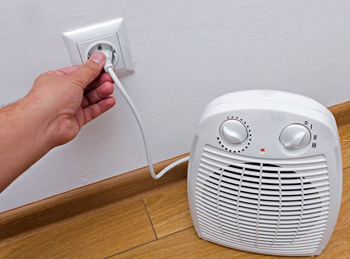
Alternative-heating equipment should be the last option used to heat a household due to the potential for uncontrolled fire, but if unavoidable, caution should be practiced.
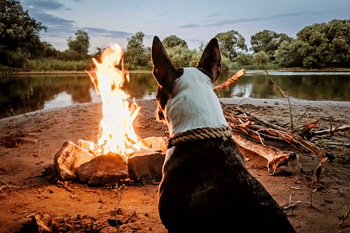
The National Interagency Fire Center reports an average of more than 60,000 wildfires are caused by people every year, burning millions of acres. The campfires used to toast marshmallows and hot dogs are a factor in this number. These sources of heat and light are a major part of camping trips, but wildfires are not the only hazard associated with the blazes. Taking a little time to practice safety will help make the trip safe for everyone.
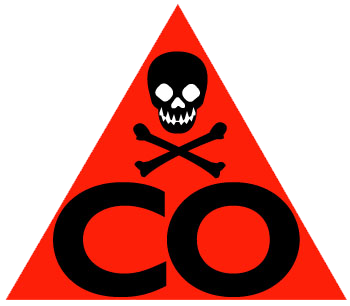
Every year, hundreds of people die from carbon monoxide gas poisoning. This can be prevented by watching for symptoms, testing alarms and regularly checking common carbon monoxide producers for issues.
Resources
- Carbon Monoxide Fact Sheets, FAQs and Videos
U.S. Centers for Disease Control and Prevention - Carbon Monoxide Health Information
MedlinePlus - Carbon Monoxide Outreach Materials
U.S. Fire Administration
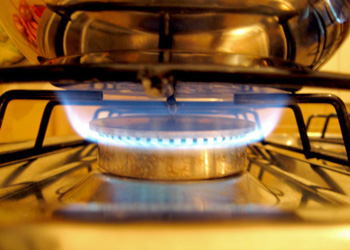
Fire departments nationwide respond to hundreds of residential cooking fires each day. Always make sure to follow safety tips in the kitchen and outdoors.
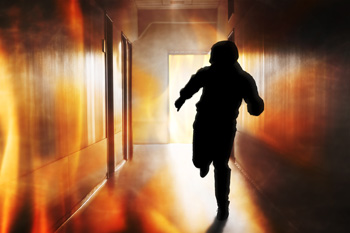
Fires spread quickly and knowing how to escape a structure that is on fire can save lives.

Fire extinguishers can be very helpful tools to reduce property damage or save lives during fires. Learn about the different types and how to use them.

Setting off fireworks is a popular activity, but one that can cause serious injury or death if proper precautions are not followed. Learn helpful tips and become familiar with state fireworks laws to keep everyone safe while using fireworks.
Resources
- Fireworks Permits and Use
Indiana Department of Homeland Security
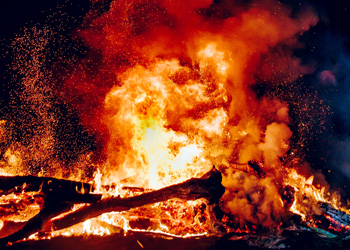
Open burning is the burning of materials in a manner that releases smoke and other emissions directly into the air without passing through a chimney or smokestack from an enclosed chamber. Pollution from open burning is a serious concern because it can harm human health and the environment.
Resources
- Fire Training Approvals
Indiana Department of Environmental Management
Smoke Alarm Safety
Properly installed and maintained smoke alarms provide the entire household an early warning of a fire. In fact, a home with properly placed and working smoke alarms doubles the likelihood of survival. Help keep every loved one safe by learning how to install and maintain smoke alarms.
 Nature Safety
Nature Safety
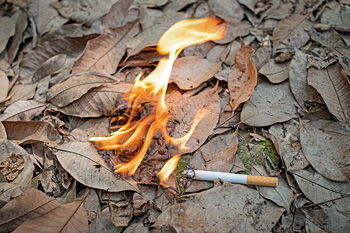
Long periods of dry weather, including droughts, can cause many issues, ranging from poor crop yields to restrictions on personal water use. These conditions increase the potential for fires, and Hoosiers should stay aware and practice safety precautions to keep their communities safe.
Resources
- Burn Bans
Indiana Department of Homeland Security

Although earthquakes are not frequent in Indiana, the state does experience them with some regularity. Increase your awareness of what to do before, during and after earthquakes.
Resources
- Central U.S. Earthquake Guide
Central U.S. Earthquake Consortium - Earthquakes
Ready.gov - Earthquake Hazards
U.S. Geological Survey - Earthquake Hazards Map
Central U.S. Earthquake Consortium - Earthquake Safety
American Red Cross
- Earthquake Safety Video Series
Great ShakeOut - Indiana Earthquakes
Indiana Geological & Water Survey - ShakeOut Resources
Central U.S. Earthquake Consortium - Without Warning! Comic Book
Indiana Department of Homeland Security
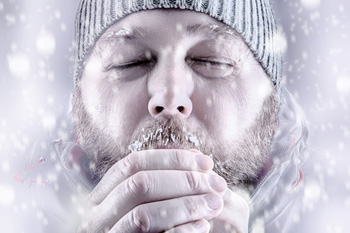
Frigid temperatures and people are not a great combination. Practicing safety when the weather becomes dangerously cold will help prevent the chance of catching a cold weather illness.
Resources
- Cold Weather Safety for Older Adults
National Institute on Aging - Extreme Cold Safety Tips
National Weather Service - Prevent Hypothermia & Frostbite
U.S. Centers for Disease Control and Prevention
- Protecting Employees From Cold Stress
U.S. Department of Labor - Winter Storms
Indiana Department of Homeland Security - Winter Weather
Ready.gov
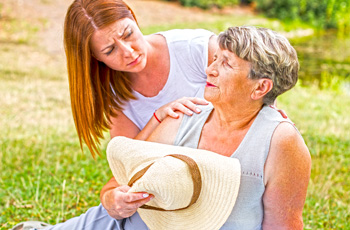
Indiana summers can be hot and humid, and overexposure to these conditions can be hazardous. Learn about heat watches and warnings, the signs of heat illnesses and safety tips.
Resources
- Preventing Heat-Related Illness
Centers for Disease Control and Prevention - Protecting Children From Sunburn
American Academy of Pediatrics
- Skin of Color: How to Protect and Detect Skin Cancer
American Academy of Dermatology - UV Index Forecast
Environmental Protection Agency
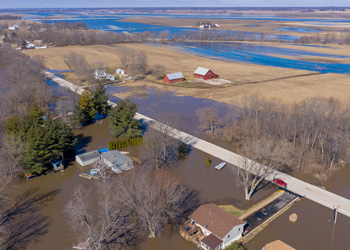
Most flood deaths are preventable, and Hoosiers can take simple steps to help protect their households in the event of a flooding emergency.
Resources
- Disaster Response
FEMA - Flood Safety Tips
Centers for Disease Control and Prevention - Flood Safety Tips and Resources
National Weather Service
- Floods
Ready.gov - Turn Around, Don't Drown
National Weather Service
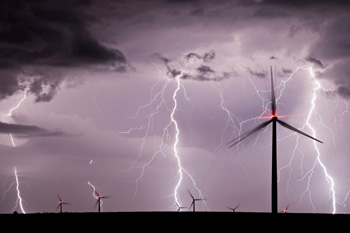
Lightning accompanies many storms, and knowing what to do when lightning enters the area can save life and property.
Resources
- Lightning Information for Water Activities
Centers for Disease Control and Prevention - Lightning Safety Tips
National Weather Service
- Severe Weather Preparedness
Indiana Department of Homeland Security - Thunderstorms and Lightning
Ready.gov
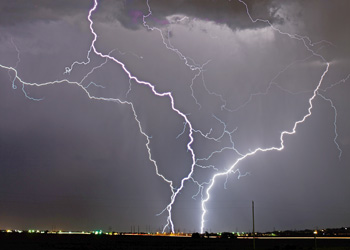
According to the National Severe Storms Laboratory, an average of 100,000 thunderstorms occur each year in the United States. Follow tips before, during and after thunderstorms to stay safe.
Resources
- Safe Rooms
Indiana Department of Homeland Security
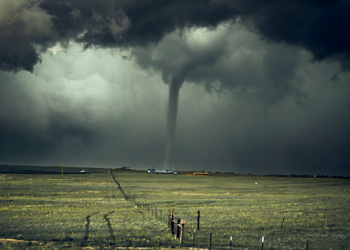
Tornadoes are devastating forces of nature that can occur during every season of the year. Thankfully, this weather phenomena can be tracked by meteorologists, so being prepared is possible.
Resources
- Tornado Safety
American Red Cross - Tornadoes
Ready.gov
- Indiana Tornado History Viewer
Indiana Department of Homeland Security - Safe Rooms
Indiana Department of Homeland Security
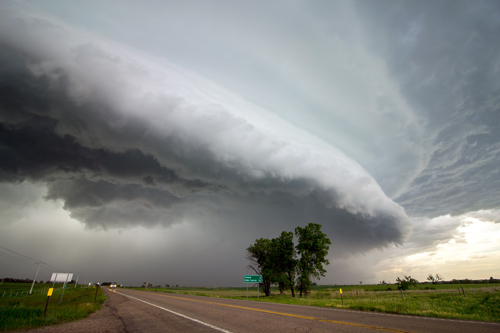
Windstorms are severe thunderstorms that carry strong winds and can cause widespread damage and pose significant threats to your safety if you are not prepared.
Resources
- Derecho Safety
National Oceanic and Atmospheric Administration - Severe Weather 101 - Damaging Winds
National Severe Storms Laboratory
- Advisories Criteria
National Weather Service - Indianapolis - High Winds Safety Rules
National Weather Service - Melbourne (Florida)
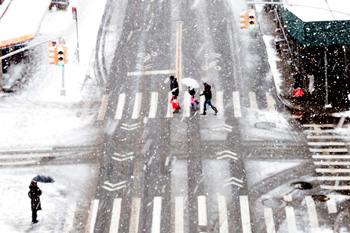
During winter, Hoosiers battle snow, ice and frigid cold temperatures. These winter weather conditions may be normal for Indiana, but preparing before the state is covered in snow is vital.
Resources
- Extreme Cold
Indiana Department of Homeland Security - How to Prepare for a Winter Storm
Ready.gov - Travel Advisories
Indiana Department of Homeland Security
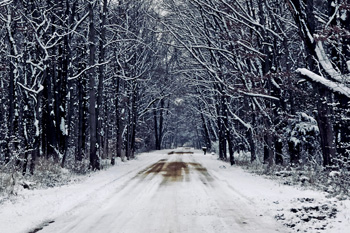
The weather outside may be frightful, but Hoosiers still have to travel in it sometimes. Stay safe by reviewing a few safety tips before leaving the home.
Resources
- INDOT Trafficwise Map
Indiana Department of Transportation - Winter Driving Safety Tips
Indiana Department of Transportation - Winter Driving Tips
National Highway Traffic Safety Administration
- Winter Storms
Indiana Department of Homeland Security - Winter Weather
Ready.gov - Travel Advisories
Indiana Department of Homeland Security
 Emergencies
Emergencies
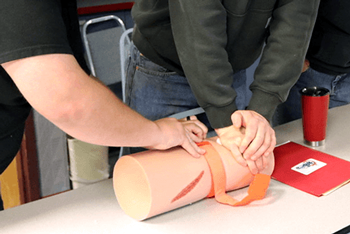
Stop the Bleed is a national campaign to teach the public how to control extreme bleeding before first responders can arrive. Learn about the effort and how to get trained.
Resources
- Stop the Bleed Website
Stop the Bleed Program - Save a Life Flow Chart
Indiana Department of Homeland Security - Stop the Bleed Poster
Indiana Department of Homeland Security
- Stop the Bleed: Bleeding Control Booklet
Indiana Department of Homeland Security - Stop the Bleed Training Report Form
Indiana Department of Homeland Security - CPR and AED How-To Videos
Indiana Department of Homeland Security
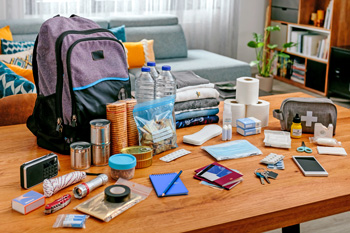
In severe emergencies, it can take up to three days for assistance to arrive. Disaster kits should be able to support the household during that time. Learn what should be part of the household disaster kit.

Many Hoosiers feel the need to help victims after disasters strike. Read how to help effectively.
Resources
- After the Disaster: How to Donate and Volunteer Responsibly, Podcast Episode 83
FEMA - Before Giving to a Charity
Federal Trade Commission - Indiana Voluntary Organizations Active in Disaster
Indiana VOAD

Today many individuals rely on technology for communication. After an emergency this technology can be hindered or cut off. Following safety tips can help keep the entire household safe.
Resources
- Business Communications Planning
Ready.gov - Continuity of Operations
Indiana Department of Homeland Security - Downloadable Family Communication Plan Templates
Ready.gov

Large events are a lot of fun, yet hazards should be something eventgoers include in their plan.

Hoosier hospitality is on display all year during community events around the state. This resource is designed to help event organizers identify potential hazards and help plan a safe and fun event for all involved.
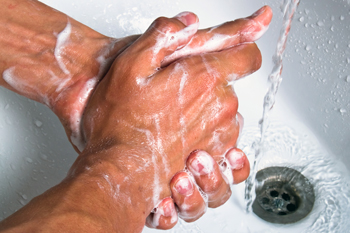
Hoosiers use and live around many hazardous chemicals and materials every day, whether they are household items or found at the workplace. These substances can have toxic effects and deserve special attention. Prepare now.
Hazardous Materials Preparedness
Resources
- Local Emergency Planning Committees (LEPCs)
Indiana Department of Homeland Security - IDHS Hazmat Section
Indiana Department of Homeland Security - List of Toxic Substances and Health Effects
Agency for Toxic Substances and Disease Registry
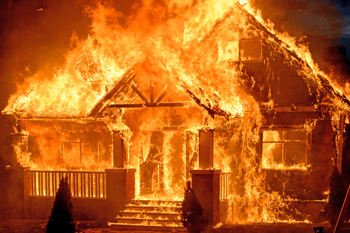
During a disaster, no individual is left unaffected. The Federal Emergency Management Agency National Household Survey indicates many Americans say they would not be ready in the event of an emergency. Spending time to prepare, even a little, before an emergency arises can help save lives.
Resources
- Make a Plan
Ready.gov - Disaster Preparedness Plan
American Red Cross
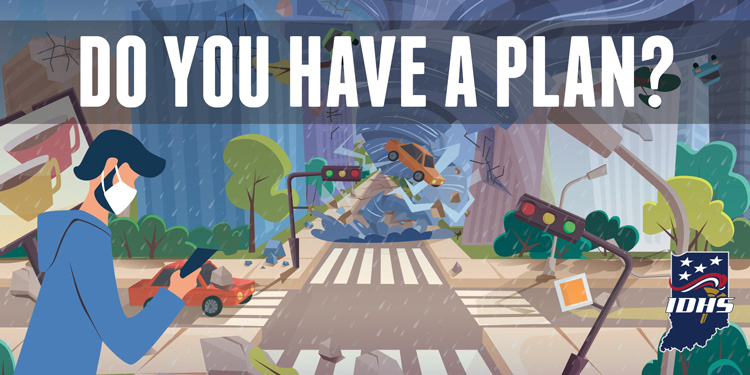
Preparation and communication are crucial during a disaster situation. Talk with friends, family and other community members about creating communication and safety plans for before, during and after all of Indiana’s disasters.
Resources
- Family Communication Plan
Indiana Department of Homeland Security - Communication Plan - Card
Indiana Department of Homeland Security
- Plan Tips, Checklist and Form
Indiana Department of Homeland Security - Plan With Responsibilities
American Red Cross

Radiation cannot be seen, smelled, felt or tasted, but it is present in your everyday life. In a radiological emergency, uncontained radioactive material can significantly increase the amount of radiation you receive to harmful levels. Plan ahead.
Resources
- IDHS Radiological Emergency Preparedness Program
Indiana Department of Homeland Security - Radiation Awareness
Indiana Department of Homeland Security - Radiation Emergencies
Ready.gov
- Radiation and Health
U.S. Centers for Disease Control and Prevention - How To Prepare for a Radiological Emergency
U.S. Nuclear Regulatory Commission

Individuals with disabilities may need to take extra precautions in planning for emergency situations.
Disabilities and Emergency Preparedness
Resources
- People with Disabilities
Ready.gov - Caring for Loved Ones in Cases of Emergency
AARP - Disaster Safety for People with Disabilities
American Red Cross
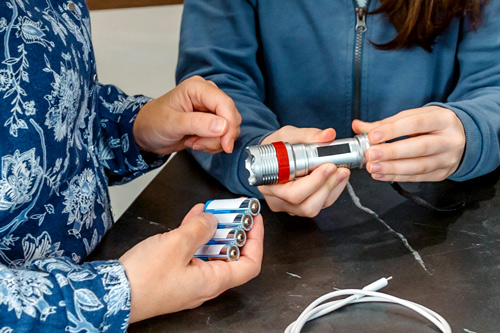
Power outages not only can disrupt communications, public infrastructure and daily life, but also may present health and safety hazards if you are not prepared.
Resources
- Power Outage Flyer
FEMA - Protecting Your Health During Power Outages
Centers for Disease Control and Prevention
- Food and Water Safety During Power Outages
U.S. Food and Drug Administration - Power Outage Safety
American Red Cross
 General Safety
General Safety
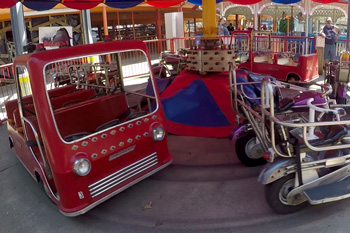
Amusement Rides
Amusement ride safety goes beyond the professional inspections process. Riders looking to enjoy them can avoid unnecessary harm by adhering to safety guidelines.
Resources
- IAAPA: The Global Association for the Attractions Industry
- RidesDatabase and Saferparks
- IDHS Elevators and Amusement Rides Section
Indiana Department of Homeland Security

Child Safety
Take time to go over safety measures and establish extra precautions to help children stay safe.
Resources

Critical Infrastructure
Indiana's security and economic prosperity depend on critical infrastructure, which is at risk from many natural and man-made hazards and threats. Just as all residents rely on this infrastructure, all also must play a role in keeping it strong, secure and resilient.

Cybersecurity
As cyberattacks continue to become more commonplace and sophisticated, it is important that all Indiana families and businesses know how to identify and avoid online threats.
Resources
- Cyber Crime
FBI - Cybersecurity
Ready.gov - Data Security
Indiana Department of Insurance - Frequently Asked Questions
State of Indiana
- Indiana Cybersecurity Hub
State of Indiana - Shields Up
Cybersecurity & Infrastructure Security Agency - StopRansomware.gov
Cybersecurity & Infrastructure Security Agency

Halloween
Halloween is a night filled with witches and ghosts, but they are not the only frightening part of the holiday. Review some safety tips before celebrating the spooky night and leave the scaring to the monsters.
- Masks can dangerously restrict vision. Try using non-toxic makeup to make sure children can see everything happening around them.
- Remind children to stay on sidewalks and look both ways before crossing a street. Drivers may not see the children if they dart out on the road.
- Tell children to never enter a stranger’s home or vehicle.
Resources
- Halloween Fire Safety Tips
National Fire Protection Association - Simple Steps for an Extra-Safe Halloween
National Safety Council - Haunted House Permits and Inspections
Indiana Department of Homeland Security
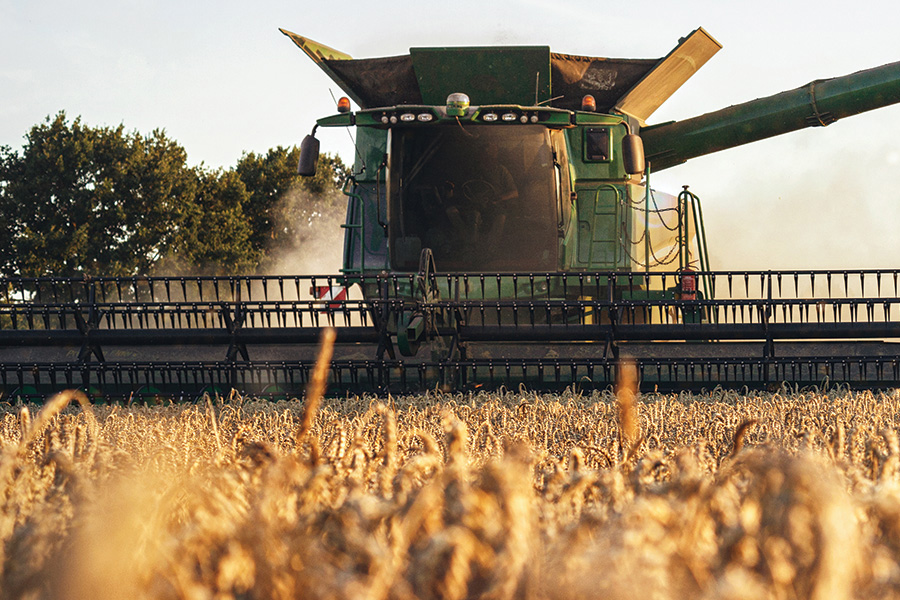
Harvest Season
During the harvest season, more slow-moving farm equipment is on Indiana’s roadways. Motorists should exercise caution and patience during September, October and November while sharing the road with these large vehicles.

Home Protection
Some home invasions are crimes of opportunity and securing a home can protect against this. However, many instances are planned, and intruders may have been watching the neighborhood for several days.

Holiday Shopping
The holiday season is a popular time of the year for shopping. During this time of substantial spending, Hoosiers should pay extra attention to protect themselves and their property.
Resources
- Cybersecurity
Indiana Department of Homeland Security - Winter Holiday Fire Safety
National Fire Protection Association - Disaster Kits
Indiana Department of Homeland Security
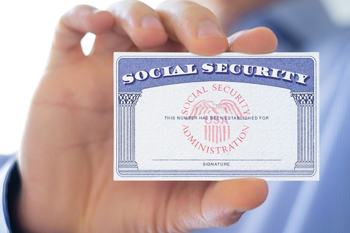
Identity Theft
Identity theft is an all-too-common form of fraud, and increased use of digital technology has increased the risk of your personal information being stolen. Learn strategies to prevent identity theft, how to keep an eye out and what to do if you become a victim.
Resources
- Identity Theft
Federal Trade Commission - Fraud and Scams
Consumer Financial Protection Bureau - Identity Theft and Fraud
U.S. Department of Justice
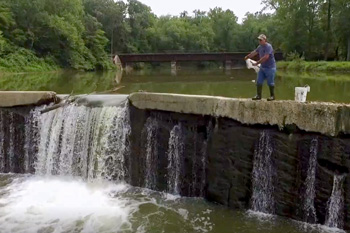
Low-Head Dams
Low-head dams may not appear dangerous, but the power of rushing water over these man-made structures can be deadly. Escaping the waters near a low-head dam is nearly impossible, and so Hoosiers should learn how to recognize these dams and how to stay safe around them.
Resources
- Dam-Safety Conference
Association of State Dam Safety Officials - Dams and Levees in Indiana
Indiana Department of Natural Resources - Keep Your Distance, Keep Your Life
Association of State Dam Safety Officials - House Bill 1099: Low-Head Dams
Indiana General Assembly
- How to Escape Low-Head Dam
Indiana Department of Homeland Security - National Dam Safety Awareness Day
Association of State Dam Safety Officials - Public Safety Around Dams
Association of State Dam Safety Officials
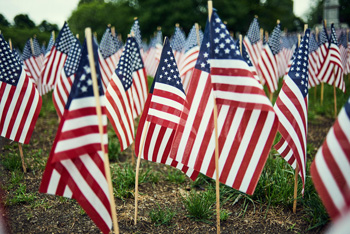
Memorial Day
Safely honor the armed forces members who gave their lives keeping America safe. Review these tips before the holiday gatherings begin.
- Use extreme caution when lighting fireworks in the wind. Keep spectators where the wind is blowing away from them.
- Do not operate a grill or campfire while intoxicated. Alcohol can impair movements and mental faculties, which makes performing potentially dangerous activities even more dangerous.
- Pace alcoholic drinks throughout the event, and consume a glass of water between every drink. Heat and alcohol dehydrates the body, making it more prone to heat illnesses and alcohol poisoning.
Resources
- County Burn Ban Map
Indiana Department of Homeland Security - County Travel Status Map
Indiana Department of Homeland Security - Drunk Driving
National Highway Traffic Safety Administration
- Fireworks Safety
Indiana Department of Homeland Security - National Weather Service Coverage
Indiana Department of Homeland Security

New Year's Eve
Waiting until the stroke of midnight to practice caution is unwise. Safely ring in the new year by following these safety tips.
- If attending the Times Square Ball Drop — or a similar event — leave valuables at home, notify loved ones, wear warm clothing and carry a charged cell phone at all times.
- Before leaving home, check weather notifications and local news stations for winter weather updates.
- Attend celebrations with a group of trusted friends and loved ones. Check on one another to promote safety.
Resources
- Alcohol and Public Health
Centers for Disease Control and Prevention - Drunk Driving
NHTSA - Fireworks Safety
Indiana Department of Homeland Security
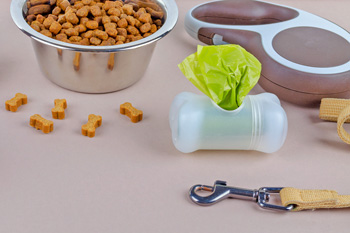
Pet Preparedness
For many Hoosiers, pets are important members of the household. Help keep them safe in an emergency by following these tips.
- Confirm potential evacuation locations that allow animals.
- Keep pets separated from unknown animals and people to prevent stress-related aggression.
- Never leave animals outdoors where they are vulnerable to the weather and can escape.
Resources
- Disaster Preparedness Overview
Indiana State Board of Animal Health - Pet Safety in Emergencies
U.S. Centers for Disease Control and Prevention - Pets and Animals
Ready.gov

St. Patrick's Day
Leprechauns and shamrocks and green beer, oh my! St. Patrick’s Day in America is dedicated to everything that is Irish and green. Remember to celebrate responsibly and keep the injuries to a pinch for not wearing green.
- Before attending any festivities, choose a designated driver who is responsible for driving the group home.
- Call law enforcement immediately after seeing someone drive away while being intoxicated.
- To help prevent the potential of someone driving while intoxicated, designate someone to collect car keys and watch them throughout the festivities.
Resources
- Drunk Driving
National Highway Traffic Safety Administration - Keep Pets Safe on St. Patrick's Day
American Society for the Prevention of Cruelty to Animals
- St. Patrick's Day: Drive Sober
Indiana Department of Transportation - Understanding the Dangers of Alcohol Overdose
National Institute on Alcohol Abuse and Alcoholism

Thanksgiving
When people think about Thanksgiving the first thing that typically comes to mind is turkey. Not deep fryer explosion. Keep safety in mind when celebrating this year.
- Remove items away from the stovetop that could catch fire such as oven mitts, utensils, towels and food packages.
- Keep an all-purpose fire extinguisher nearby and never use water to douse a grease fire.
- Meat must be completely thawed before being placed in a deep fryer.
Resources
- Driving Safety Tips
Indiana Department of Transportation - Pet Care Thanksgiving Safety Tips
ASPCA
- Road Safety
NHTSA - Thanksgiving Fire Safety
NFPA
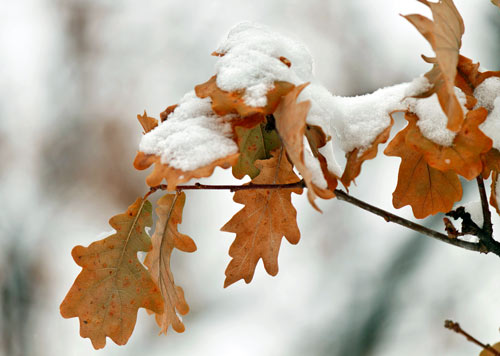
Winter Holidays
Many residential fires occur due to placing holiday decorations to close to heat sources. Decorations are a festive way to celebrate winter holidays, but it is important to remember safety when the decorating begins.
- Consider using an electronic kinara, advent wreath, menorah or other religious candleholder to lower the chances of a fire.
- Christmas trees should have a sturdy stand to prevent them from falling over.
- Keep poisonous plants such as poinsettias out of reach of pets and children, who may try to eat them.
Resources
- Christmas Tree Fire Safety
American Christmas Tree Association - Fire Risks During Winter Holidays
NFPA
- Fire Outreach Materials
U.S. Fire Administration - Winter Holiday Safety
National Safety Council

Workplace Violence
The term “workplace violence” includes many behaviors, such as threats, harassment and intimidation, as well as physical violence and homicide. Overall, according to the Occupational Safety and Health Administration (OSHA), nearly 2 million American workers are victims of some form of workplace violence every year.

Social Media
Social media platforms are an integral part of everyday life, helping people stay connected, informed and entertained. But with that connection comes the risk of scams, misinformation, cyberbullying and more. Practicing social media safety helps protect personal information, mental health and even physical well-being.
Resources
- Protecting Kids Online
Federal Trade Commission - Social Media, the Safe Way
U.S. Department of Veterans Affairs - Staying Safe on Social Networking Sites
U.S. Cybersecurity and Infrastructure Security Agency

Misinformation
Misinformation can take many forms, including altered images, false statistics or fabricated stories. Learning how to recognize and respond to it helps protect you, your community and the truth.
Resources
- Cybersecurity
Indiana Department of Homeland Security - Health Misinformation
U.S. Office of the Surgeon General
- Disinformation Stops With You
Cybersecurity and Infrastructure Security Agency (CISA) - Misinformation, Disinformation and Propaganda: Be Media Literate
Cornell University

Scams
Scammers often take advantage of emergencies, confusion or fear, tricking people into giving away money, personal information or access to their accounts. Whether after a disaster, through phone calls or online, know the signs of a scam to protect yourself and your family.
Resources
- Avoiding Scams and Swindles
U.S. Attorney's Office - Southern District of Indiana - Consumer Protection Division
Indiana Attorney General
- Consumer Scam Alerts
Indiana Bureau of Motor Vehicles - Protect Yourself from Scams
Indiana State Police

Youth Helmet Safety
Helmets are the most effective safety device available for bicycle accidents, and properly wearing a bicycle helmet greatly reduces the odds of severe head injuries. Read the guide to learn how to make sure a child's helmet fits and is worn correctly.
Resources
- Comprehensive Helmet Safety Information
Bicycle Helmet Safety Institute - In-Depth Analysis on Children and Wheeled-Sports Safety
Safe Kids Worldwide - Bicycle Safety Tips Flyer
National Injury Prevention Foundation
- Bicycle Safety Tips, Videos and Infographics
Safe Kids Worldwide - Bicycle Safety Tips
Indiana Department of Health - Online Concussion Training
U.S. Centers for Disease Control and Prevention
 Campaigns
Campaigns
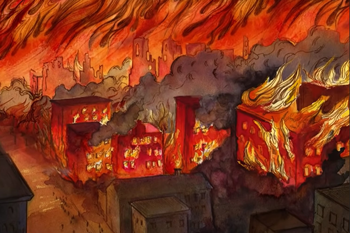
Fire Prevention Week
Fire Prevention Week is observed nationwide every October on the same week as October 9, in recognition of the Great Chicago Fire of 1871. Learn fire safety tips during this week.
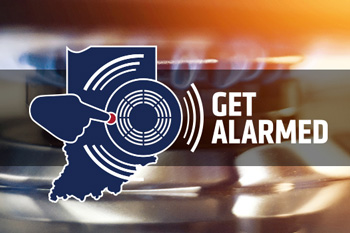
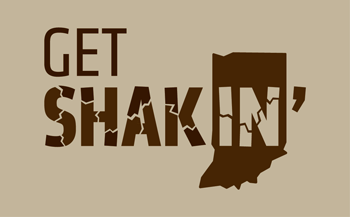
Get ShakIN'
Get ShakIN' is an IDHS campaign focused on earthquake awareness and preparedness.
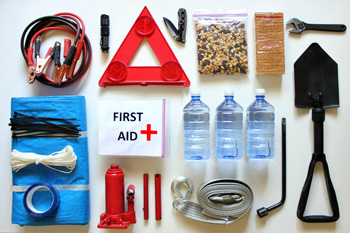
National Preparedness Month
Every September is National Preparedness Month. It is a time to raise awareness about the importance of preparing for disasters and emergencies, which can happen any time.
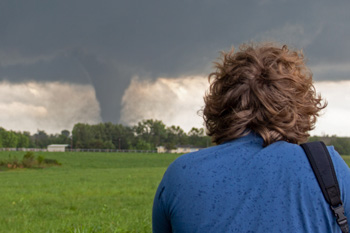
Severe Weather Preparedness Week
Each March, IDHS collaborates with the National Weather Service (NWS) during Severe Weather Preparedness Week to remind and educate Hoosiers about seasonal severe weather threats and how to effectively prepare for them.
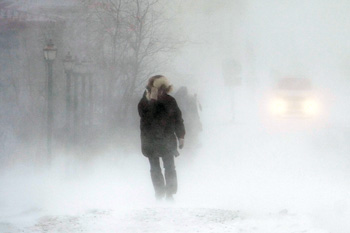
Winter Weather Preparedness Week
Every November, IDHS collaborates with the National Weather Service (NWS) during Winter Weather Preparedness Week to remind and educate Hoosiers about seasonal severe weather threats and how to effectively prepare for them.
Get Prepared
IDHSGet Prepared
Get Prepared is a public education campaign of the Indiana Department of Homeland Security.
